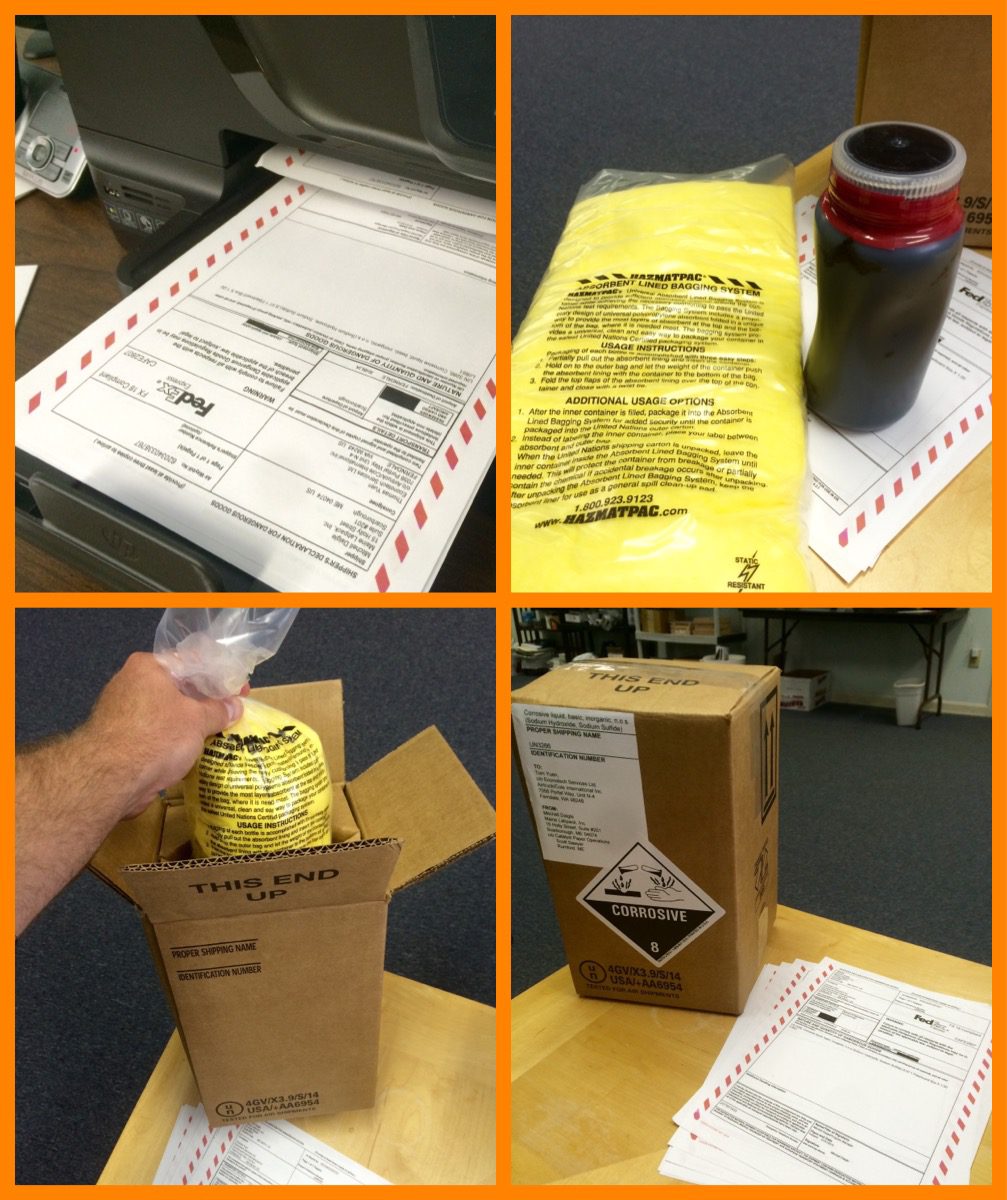
Hazmat shipping papers are official documents that shippers prepare for carriers that provide critical information about the hazardous material being transported. Such papers serve as an official record of the material to ensure the proper handling and necessary emergency response information for first responders in the event of an incident. Whether shipped by ground, air, or sea, hazmat paperwork will detail and fully disclose specific information about each material in the shipment.
Regulation of Hazardous Material Shipping
In the U.S., hazardous material regulations are applicable to the transportation to any type of hazardous materials as a product in commerce. The shipment of hazardous materials is covered by federal regulation 49 CFR (the Code of Federal Regulations), with the Department of Transportation responsible for enforcement administered by several federal agencies.
The Federal Motor Carrier Safety Administration (FMCSA) is the federal agency that oversees the commercial motor vehicles that have oversight of hazmat requirements and hazmat shipping papers. Other agencies that enforce 49 CFR within the U.S. borders are the Pipeline and Hazardous Materials Security Administration (PHMSA), Federal Aviation Administration (FAA), Federal Railroad Administration (FRA). Enforcement of international shipments are deferred to the International Air Transport Association (IATA) and the International Maritime Organization under the International Dangerous Goods Code (IMDG). Finally, all radioactive materials shipped are regulated and enforced by the U.S. Nuclear Regulatory Commission (NRC).
Importance of Hazmat Shipping Papers
With its emphasis on safety, hazmat paperwork details the type of material being transported. Hazardous materials are organized into a risk related numerical classification system. There are 9 such classifications that are used by all agencies charged with enforcing 49 CFR to regulate commercial shipping.
The nine hazardous material classifications are:
- Class 1: Explosives
- Class 2: Gases
- Class 3: Flammable Liquids
- Class 4: Flammable Solids
- Class 5: Oxidizers
- Class 6: Toxic and Infectious Substances
- Division 6.1: Poisonous Material
- Division 6.2: Infectious Substance
- Class 7: Radioactive Material
- Class 8: Corrosives
- Class 9: Miscellaneous Hazardous Materials
Shipping papers are vital for the safe transportation of hazardous material. Law enforcement officials are rigorous about ensuring that hazmat shipping papers are appropriately documented. If paperwork is incomplete or improperly filled out, it can cause delays or prevent the transport of the material, or even lead to a fine. In general, it is a good practice by shippers to provide carriers with separate hazmat shipping papers in addition to any invoices or bills of lading. As the purpose of the hazmat paperwork is chiefly safety, it must identify in great detail the hazardous material being transported. Descriptive information is essential for first responders who must quickly assess any dangers posed by the material. That information will help guide their actions in response to an emergency situation. Thus, the paperwork must include information about the hazardous material being shipped, but also the emergency information for first responders.
Required Information for Hazmat Paperwork
To be certain, information on the hazmat paperwork is lengthy and exhaustive. Systematically, it would be organized to include the hazard classification as defined, 1 thru 9, and any applicable subclass, with an identification number cross-listed and found in the Hazardous Materials Table. Paperwork should also include the following:
- Description of the hazardous material
- Total quantity and the packing group, identified in Roman numerals
- Total number and types of packages or containers holding the hazardous material
- Any immediate health risks and dangers
- Safety methods for combating fires, spills, or leaks of any size
- An emergency response telephone number with any additional descriptive requirements per 49 CFR
All hazmat paperwork must be within the driver’s reach with the seat belt on, and clearly visible to any first responder who may enter the vehicle.
Hazmat shipping papers are essential for the safe transportation of hazardous materials via land, air or sea. Shipping of hazardous material is recognized as a product of commerce and highly regulated because of it. Mandates for safe transportation of hazardous material is listed under federal regulation 49 CFR, and is enforced by several federal agencies within the Department of Transportation. For shippers and carriers alike, the clear objective of hazmat paperwork is to provide the vital information necessary for proper handling of hazardous material by supply chain personnel and to allow first responders to act quickly and decisively in the event of an emergency.
To learn more about the dangerous goods shipping services offered at MLI Environmental, please request a shipping quote from us today!
